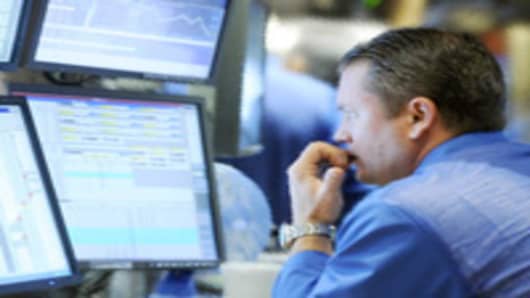Investors can be forgiven for feeling helpless in a world of high-frequency trading, Flash Crashes and big institutions, who now, more than ever, seem to be pulling all the levers on Wall Street.
But that doesn't mean they actually are helpless.
As uphill of a climb as it may seem, the retail investor can still play this highly technical, electronically-controlled game where market action happens in fractions of fractions of a second.
"If you're just a regular individual person trying to trade on a daily basis, you're up against an army," says Kathy Boyle, president of Chapin Hill Advisors in New York. "Essentially, these guys have gizmos that you'll never be able to compete against."
The trick, then, may be not to try to beat the institutional investors and all their computerized magic tricks, but rather to join them.
A few ways individual investors can make that happen:
Buy the ETFs and Follow the Leaders
There's an immediate caution to be issued about exchange-traded funds: The May 6 Flash Crashhad as one of its many tangled roots an attack on ETFs that drained liquidity from the market and sent many of the funds' prices spiraling downward.
But overall, the funds—at least the straight-up, non-leveraged types—do a yeoman's job of tracking their underlying indices, which in many cases are formulated by the big institutions like Barclays and Goldman Sachs .
Because ETFs are constructed like mutual funds but trade like stocks, that can give individuals quick access to the moves the big guys are making.
"Individual investors, if they're trying to do things on their own, they're definitely lopsided," Boyle says. "There's still things out there. The individual investor can invest via ETFs and funds and get the benefit of what the institutions are doing. If you get in on an ETF, get in on mutual funds, you're in on the institutions and you can hope the institution is able to execute their end of it."
Go to the Pros
One of the main problems high-frequency computerized trading poses is, as the name implies, speed. Their programs can place thousands of trades in the bid-ask arena before an individual investor, at home in front of a computer screen and dealing with a broker, can punch in the numbers on their phone or even go through some online brokerages.
One solution is to deal with firms that provide trading algorithms and other platforms that can compete with the high-flying institutions.
""What technical analysis does is it shows you what the big boys are doing," says Boyle. "You can ride the wave. You don't have to be on a surfboard waiting for it to come>"
"What this company's all about is empowering regular investors by connecting them directly to market exchanges. We provide very sophisticated technology," says Andrew Wilkinson, senior analyst at Interactive Brokers, an online options trading firm based in Greenwich, Conn. "We level the playing field in that respect. We bring to the retail investor and professional active trader those tools that will allow them to compete."
Firms like Interactive Brokers provide platforms without requiring a huge up-front investment: A balance of $10,000 is enough to get started.
Technical Analysis
With the rise of high-frequency trading, which now accounts for more than half of all market activity, has come a new industry in chart and trend analysis that has, in some areas, supplanted fundamental stock analysis.
The main watchword here is cost: The pros who can diagnose an array of chart patterns—like the Death Cross, Head and Shoulders, Cup and Hands and a slew of others—and volume trends often do not offer their services cheaply.
It's important to shop around, but going to a technical analyst with a solid track record can be well worth the money.
"What technical analysis does is it shows you what the big boys are doing," says Boyle. "You can ride the wave. You don't have to be on a surfboard waiting for it to come and you don't have to ride it to a crest or crash. If individual investors get themselves educated enough and use technical analysts, I think that evens up the score."
Trust the Regulators
No, seriously.
While the Flash Crash provided an alarming demonstration of how far behind the curve the Securities and Exchange Commission and other market cops can be, the time since then has seen a slew of sensible moves that show the problem, if being a far cry from settled, is at least getting the proper attention.
Another example of regulators clamping down came Sept. 13, as the Financial Industry Regulatory Authority, or Finra, slapped Trillium Brokerage Services in New York with a $1 million fine for "using an illicit high-frequency trading strategy and related supervisory failures."
What's more, since the flash crash, the SEC has instituted circuit breakers on the exchanges that trip when securities experience a 10-percent change in a five-minute period. The circuit breakers were most recently extended to stocks in the Russell 1000index.
Despite all the turbulence, faith in the market, at least on many trading floors, remains fairly solid.
"The bigger concern with the market is instability related to May 6 Flash Crash, whether it was a structural issue with the market or if it was high-frequency traders quote-stuffing," says Dave Lutz, managing director of trading at Stifel Nicolaus. "That damages the psychology, but the marketplace is a still a very fair playing field."



